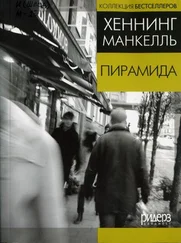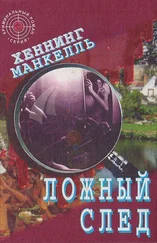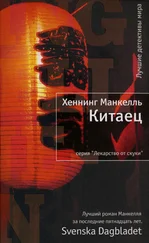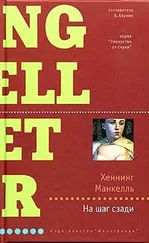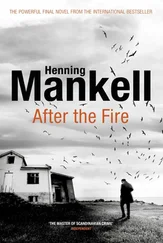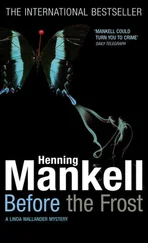The dead man’s name was Carter, and he came from Luanda. They had pieced together an identity and history for him now, and Wallander thought he had finally been able to answer the question he had asked himself so many times during the investigation: What had happened in Angola? Now he knew at least the bare bones of the answer. Falk and Carter had met in Luanda during the 1970s, probably by accident. Exactly what that first meeting had been like or what had been said was impossible to reconstruct, but the two men had clearly had a great deal in common. They had shared many traits in which pride, a taste for revenge, and a confused sense of being among the chosen few had predominated. Together they had started laying the plans for an attack on the global financial system. They were going to fire their electronic missile when the time was right. Carter’s extensive familiarity with the structures of financial organizations, coupled with Falk’s innovative technological knowledge of the electronic world that connected those institutions, had been a powerful and potentially lethal combination.
Together they had built up a secretive and strongly controlled organization that came to include such disparate individuals as Fu Cheng, Elvira Landfeldt, and Jonas Landahl. They had been pulled in, indoctrinated, and forever ensnared. The picture that had emerged was of a highly hierarchical organization in which Carter and Falk made all the decisions. Even if the evidence was as yet insubstantial, there were indications that Carter had personally executed more than one unsatisfactory member of the group.
To Wallander, Carter seemed like the archetypal crazed and ruthless sectarian leader, driven by cold calculation. His impression of Falk remained more complicated, since he had never been convinced that Falk shared the same capacity for ruthlessness. But Falk did appear to have had a carefully guarded but deep-seated need for affirmation. During the 1960s he had swung from the extreme right to the radical left. Finally he had broken with conventional politics entirely and embarked on his demonic plottings against the human race.
The police in Hong Kong had been able to establish the true identity of Fu Cheng. His real name had been Hua Gang. Interpol had identified his fingerprints at the scene of several crimes, including bank robberies in Frankfurt and Marseilles. Though he couldn’t prove it, Wallander suspected that this money had been used to finance parts of Falk’s and Carter’s operations. Hua Gang had been involved in organized crime for a long time and had figured as a suspect in several murder cases, both in Europe and Asia, without ever being convicted. There was no doubt that he had been the killer of both Sonja Hökberg and Jonas Landahl. Fingerprints and reports from several witnesses confirmed this. But Hua Gang had been working under the direction of Carter, and perhaps of Falk. There was still work to be done in mapping the entire workings and reach of the organization, but the information they already had suggested that there was no longer a reason to fear the group. With Carter and Falk dead, the organization had essentially ceased to exist.
Wallander was never able to determine exactly why Carter had shot Elvira Lindfeldt. Modin had reported as much as he could about the angry accusations Carter had flung at her before she died. Wallander assumed she had simply known too much and become a liability. Carter must have been in a state of near desperation when he reached Sweden.
Still, he had come uncomfortably close to succeeding. If either Wallander or Modin had put the bank card into the machine at exactly five thirty-one that Monday, the twentieth of October, they would have unleashed an electronic avalanche. The experts who had been tracing the infiltrations that Falk had made into the bank networks had been amazed. Falk and Carter had managed to render the major financial institutions of the world shockingly vulnerable to attack. Right now, security experts around the world were working around the clock to rectify these deficiencies, while yet other groups were trying to construct an accurate picture of what would have happened had the plan actually been set in motion.
Luckily, of course, neither Modin nor Wallander had entered Carter’s password into the machine. And nothing had happened, other than that a selection of cash machines in Scania had gone haywire that day. Many of them had been shut down, but as yet no problem had been located. Eventually they had resumed working normally just as mysteriously.
They never did manage to find a satisfying answer to why Sonja Hökberg was thrown against the high voltage wires at the power substation, nor why Falk had been in possession of the blueprint. They had, however, managed to find out how the perpetrators had gained access to the station. That had been thanks to Hansson’s doggedness. It turned out that one of the technicians, Moberg, had come home from a vacation to find that his house had been broken into. The keys to the station had still been there, but Hansson maintained that whoever committed the burglary must have made an imprint and then had copies made by bribing the American manufacturer. Simple fact-checking had revealed an entry visa in Jonas Landahl’s passport proving that he had been in the United States in the month following the break-in at Moberg’s house. The money may have come from Hua Gang’s bank robberies in Frankfurt and Marseilles.
Some loose ends were painstakingly tied up; others remained unsolved. They found out that Tynnes Falk had kept a post-office box in Malmö — but they could never figure out why he had told Siv Eriksson that he had his mail sent to her address. His journal was never recovered, nor were the fingers that had been severed from his hand. The coroner’s office did, however, finally determine that he had died from natural causes. Enander had been right about one thing: it was not a heart attack. Falk’s death was the result of a burst blood vessel in his brain.
Other information slowly trickled in. One day Wallander found a long report on his desk from Nyberg in which he described how they had determined that the empty suitcase found in Jonas Landahl’s cabin on the ferry had belonged to him. Nyberg had not determined exactly what had happened to the contents but assumed that Hua Gang had thrown them overboard in an effort to delay the identification of the body. They only ever recovered his passport. Wallander put the report aside with a sigh.
The most important task had been the mapping of Carter’s and Falk’s strange world. Wallander knew now that their ambitions had known no bounds. After their intended crippling of the world financial markets, they’d had plans to strangle important utilities worldwide. They had been motivated in no small part by their own vanity and an intoxication with their sense of power. Wallander thought that it was this weakness that had tempted Carter to have the electrical relay brought to the morgue and to have Falk’s fingers cut off. There had been religious overtones in their macabre world, and Carter and Falk had figured as not only as overseers but as deities.
Although Carter and Falk had lived in the idiosyncratic realm of their own deranged fantasies, Wallander had started to sense that at least their plan had cast attention on an important insight: the incredible vulnerability of modern society.
Sometimes he thought about it for a long time late at night. During the past thirty years, a society had been emerging that he did not fully recognize. In his work he was constantly confronted with the results of brutal forces that ruthlessly flung people to the outer margins. The walls surrounding these outcasts were dauntingly high: drugs, unemployment, social indifference.
These changes were accompanied by a parallel development in which members of society were being connected ever more tightly by new technological innovations. But this highly efficient electronic network came at the cost of increased vulnerability to sabotage and terror.
Читать дальше

